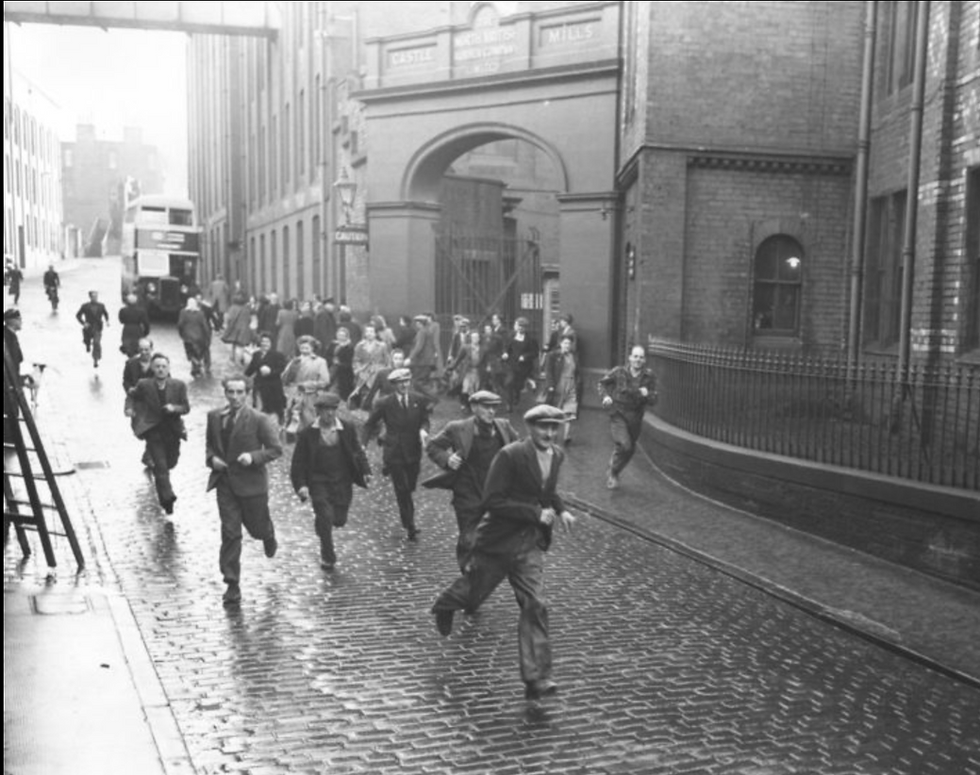Victorian Fountainbridge: History of Dundee Street, Edinburgh
- Jul 10
- 3 min read

In the late 1800s, the streets around Dundee Street, Yeaman Place and Polwarth Gardens were alive with smoke, steam, and the clatter of industry. This part of Edinburgh, once farmland on the city’s edge, was rapidly transformed during the Victorian era into one of its busiest working-class neighbourhoods. Solid stone tenement blocks, still standing today, were built to house the swelling numbers of labourers, ironmongers, railwaymen and rubber workers drawn to the area by the promise of steady work and community life.
Just steps away, the Union Canal—now a peaceful walkway—was once an industrial highway. The Union Canal, completed in 1822, was designed to carry coal from the Lanarkshire coalfields straight into Edinburgh. Its name reflects its purpose: to unite Edinburgh and Glasgow by connecting to the Forth & Clyde Canal, creating a continuous water route across central Scotland. In its heyday, barges glided silently along its surface, loaded with coal, stone, and produce. Today, it offers a tranquil walking path—but its name still whispers of that grand ambition to link Scotland’s two great cities.
Towering beside the canal was the vast Fountain Brewery, its chimneys releasing the scent of hops into the air. Not far away, the North British Rubber Company was making everything from hot water bottles to the Wellington boot, which became vital issue for soldiers in the muddy trenches of the First World War.
To the north, trains roared in and out of Haymarket Station via the Caledonian Railway. This constant movement of goods and people gave the district its heartbeat. The work was hard, the housing modest, but the spirit of the place was strong. Stairwells were shared, as were outdoor toilets and backyard washhouses. Tenements often had no running hot water, so when the Dalry Public Baths opened in 1897, they were a lifeline. Families would bathe, swim, and use the communal “steamie” to do their weekly laundry—remarkably, the baths are still open to the public today.
One resident, Private John Watson of 141 Dundee Street, was an ironmonger who enlisted with the Royal Garrison Artillery and was tragically killed during World War I. Like many men from this neighbourhood, he left behind a life shaped by industry, duty, and tight-knit community. The war he fought in was the same war that brought trench foot into grim prominence — a condition so widespread and devastating that the North British Rubber Company, just along the road, was commissioned to mass-produce the Wellington boot. Tens of thousands of pairs were sent to the front lines from this very district, a small but vital contribution to the war effort made by the same community that lost men like John.
At the corner of Yeaman Place and Watson Crescent, you’ll still find The Golden Rule, a much-loved pub that began as a wine and spirit merchant’s shop in 1899. Converted into a pub in the 1930s, its charm remains untouched. The same could be said for much of this historic pocket of Edinburgh. The canal, the baths, the pub, the railway—even the local library—are still here, quietly carrying the memory of a neighbourhood built on graft, solidarity, and invention.
Want to explore more of Edinburgh’s hidden history?
Wander beyond the guidebooks and discover the stories behind the city’s closes, canals and cobbled streets.
Browse more local tales on our Edinburgh History Walks map.




Comments